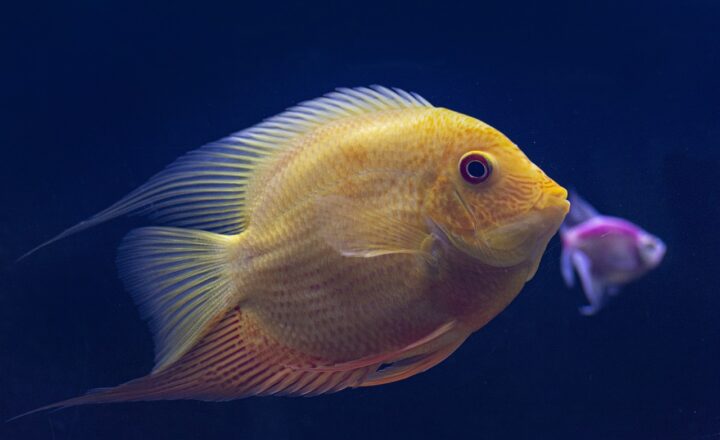
Fishing can be one of the most relaxing and rewarding hobbies. Whether you’re a seasoned angler or a beginner looking to cast your first line, understanding the tools of the trade can greatly enhance your fishing experience. Among these tools, fishing lures play a crucial role in attracting fish and securing your catch. In this guide, we’ll explore the most popular fishing lures, what makes them effective, and how to choose the right one for your fishing adventures.
1. Understanding Fishing Lures
Fishing lures are artificial baits designed to attract fish. Unlike live bait, lures are made from various materials and come in diverse shapes, sizes, and colors, each serving a unique purpose. The right lure can make a significant difference in your fishing success.
Generally, lures can be divided into two main categories: hard baits and soft baits.
– Hard Baits: These lures are made from materials like plastic, wood, or metal and usually have a specific action or vibration when retrieved, making them attractive to fish. Examples include crankbaits, jerkbaits, and topwater lures.
– Soft Baits: Made from pliable materials like rubber or silicone, soft baits can mimic the texture and movement of live bait. Common types include worms, grubs, and swimbaits.
The effectiveness of a lure hinges on its ability to imitate the natural prey of local fish species while also triggering their predatory instincts.
2. The Top 10 Fishing Lures and Their Benefits
Here are the top 10 fishing lures that have proven to be effective across various fishing environments:
- Crankbaits: These hard lures are made to mimic the swimming motion of baitfish. They dive to different depths depending on their design and can trigger strikes when retrieved gradually or quickly. Crankbaits are especially effective in freshwater fishing for species like bass and pike.
- Spinnerbaits: Unique for their spinning blades that create vibrations and flash in the water, spinnerbaits are versatile and can be used in various conditions. They are ideal for bass fishing around vegetation or structures.
- Jerkbaits: These lures are designed to be fished with a stop-and-go technique that mimics a wounded fish. Jerkbaits can be either hard or soft and work effectively in both freshwater and saltwater for species like trout, bass, and walleye.
- Topwater Lures: Known for their surface disturbance, topwater lures create a visual and auditory trigger for fish. They are especially thrilling when fishing for aggressive species like bass or stripers during dawn or dusk.
- Swimbaits: Mimicking the motion of fish, swimbaits are versatile soft bodies that can be used in saltwater and freshwater. They are particularly effective for targeting larger fish like muskie and pike, who are drawn to the larger profile.
- Spoon Lures: Characterized by their shiny, curved surface, spoon lures reflect light and create vibrations as they move. They work well for various species, especially in deep water where they can attract fish from a distance.
- Worms: Soft plastic worms are staples in the fishing industry due to their effectiveness. Rigged in various ways, they can imitate natural prey and entice bites from species like bass and panfish.
- Buzzbaits: A type of topwater lure that creates surface splashes and noise, buzzbaits are great for enticing fish during low-light conditions, making them perfect for targeting bass during dawn and dusk.
- Inline Spinners: Easy to use and effective across different environments, inline spinners flash and rotate in the water, making them attractive to a wide variety of fish species, including trout and bass.
- Jigs: These lures consist of a weighted head and a hook dressed with various materials. Jigs are incredibly versatile and can be used in multiple techniques, making them effective for different species and conditions.
Each of these lures has its unique advantages depending on the fishing conditions, target species, and personal preferences.
3. Factors to Consider When Choosing Lures
Selecting the right fishing lure involves considering several key factors:
– Water Clarity: In clear water, fish may be more cautious and prefer natural colors, while in murky water, brighter colors and more noise can grab their attention.
– Depth of Water: Knowing the depth at which fish are suspended can help you choose a lure that dives to that depth.
– Time of Year: Seasonal patterns affect fish behavior. For instance, during spawning seasons, fish might be found in shallow waters and respond differently to lures than during colder months.
– Target Species: Different species have unique preferences; thus, understanding what your target fish feeds on can help you choose an effective lure.
Taking these factors into account can greatly increase your chances of success on the water.
4. Techniques for Using Lures Effectively
Mastering the techniques of lure fishing is as crucial as choosing the right lure:
– Retrieve Techniques: Depending on the type of lure, you should vary your retrieve—fast, slow, or erratic—to mimic natural prey movement and entice strikes.
– Casting Accuracy: Positioning your lure in the right spot is essential. Aim for areas where fish are likely to be hiding, such as structures, vegetation, or drop-offs.
– Timing: Fish often feed at specific times of the day. Early morning and late evening are typically the most productive times for fishing.
– Observe Fish Behavior: Pay attention to how fish are reacting to your lure. If they’re striking but not hooking, consider changing the size, color, or type of lure.
By employing these techniques, you can become more proficient in lure fishing and improve your catch rates.
Conclusion
Fishing is not just a sport; it’s an art that combines skill, patience, and the right tools. Understanding the most popular fishing lures and their effectiveness is essential for any angler looking to improve their chances of making a great catch. Experimenting with different lures, techniques, and observing fish behavior are key to becoming a successful angler. So gather your gear, head to your favorite fishing spot, and enjoy the thrill of the catch!
Happy fishing!






